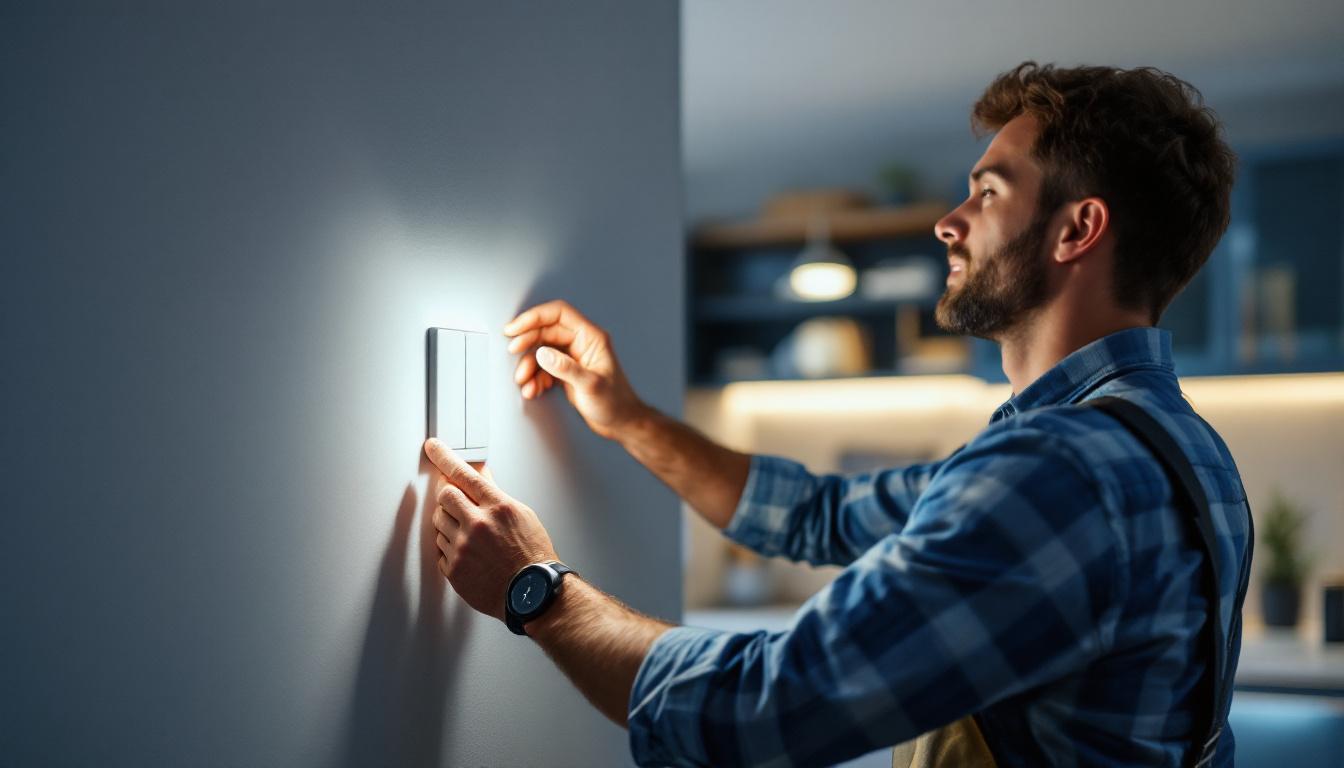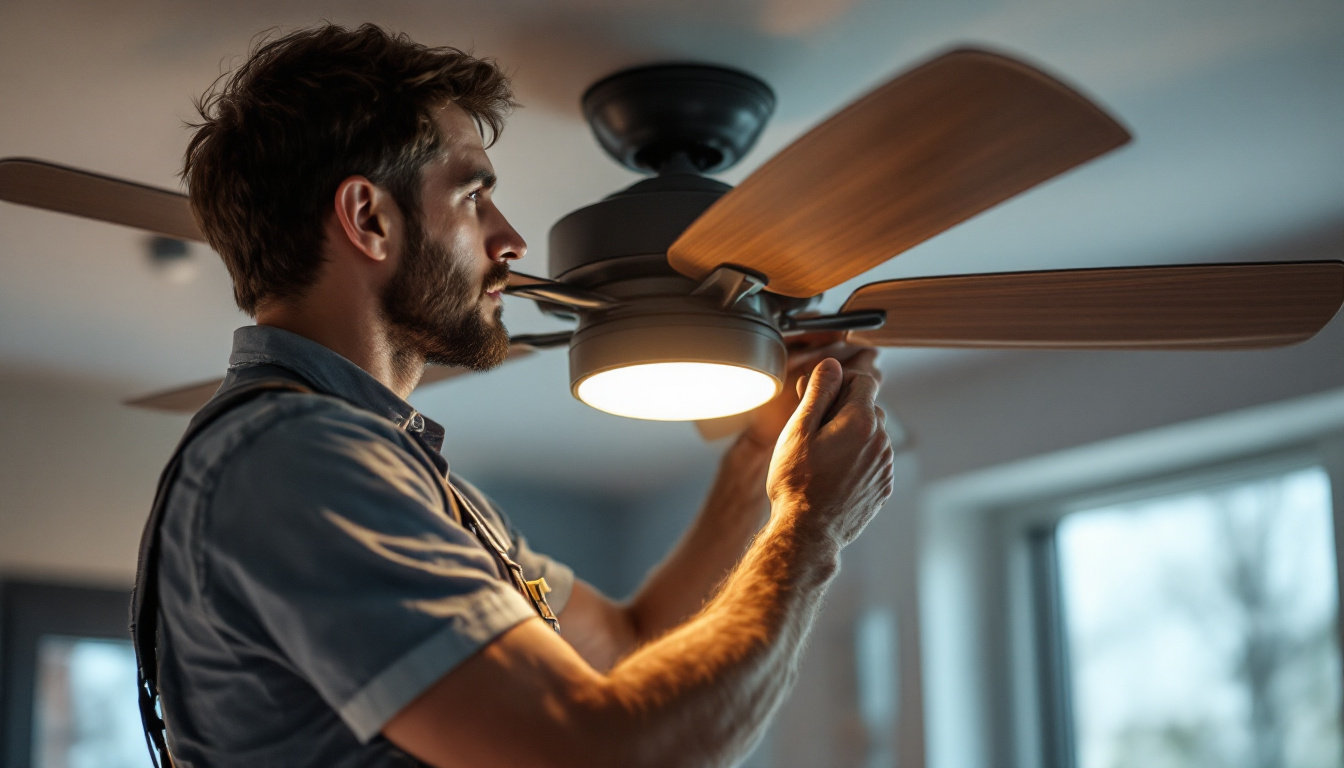
In the world of electrical installations, understanding the intricacies of three-way light switches is essential for lighting contractors. These switches allow for convenient control of lighting from multiple locations, enhancing both functionality and user experience in residential and commercial spaces. This guide delves into the fundamentals, installation techniques, and troubleshooting tips associated with three-way light switches, equipping contractors with the knowledge needed for successful projects.
Three-way light switches differ significantly from standard single-pole switches. They are designed to control a single light fixture from two different locations, making them ideal for hallways, staircases, and large rooms. Understanding how these switches operate is crucial for any lighting contractor. The convenience they offer not only enhances functionality but also contributes to the overall safety of navigating spaces, especially in areas where visibility is paramount.
At the core of a three-way switch system are two switches that communicate with each other to control the same light fixture. Each switch has three terminals: one common terminal and two traveler terminals. The common terminal connects to the power source or the light fixture, while the traveler terminals connect the two switches. This configuration allows the switches to work in tandem, enabling users to turn the light on or off from either location. The clever design of the traveler terminals allows for the switches to be wired in a way that, regardless of the position of either switch, the circuit can be completed to illuminate the light fixture, providing seamless control.
A typical three-way switch system includes the following components:
In addition to these fundamental components, it is important to consider the type of wiring used in the installation. The most common wiring method involves using three-wire cables, which include two insulated wires and a bare ground wire. This setup not only facilitates the necessary connections between the switches but also ensures that the system is grounded, reducing the risk of electrical shock. Furthermore, when selecting light fixtures for a three-way switch system, one should take into account the wattage and compatibility with dimmers if mood lighting is desired. The versatility of three-way switches allows for creative lighting solutions, enabling homeowners to enhance their living spaces while ensuring practicality and safety.
Proper installation of three-way light switches is vital for safety and functionality. Below is a step-by-step guide to ensure a successful installation.
Before beginning the installation, gather the following tools and materials:
1. Turn Off Power: Before starting any electrical work, ensure the power is turned off at the circuit breaker. Use a voltage tester to confirm that the power is off.
2. Run the Electrical Cable: Run a length of electrical cable from the power source to the first switch location. Then, run another cable from the first switch to the second switch, and finally, from the second switch to the light fixture.
3. Connect the Wires: At the first switch, connect the black wire from the power source to the common terminal of the switch. Connect the two traveler wires to the traveler terminals. At the second switch, connect the traveler wires to the corresponding terminals and connect the common terminal to the light fixture’s black wire.
4. Grounding: Connect the ground wires (bare or green) to the ground terminal on each switch and ensure they are also connected to the electrical box.
5. Secure Everything: Once all connections are made, carefully tuck the wires into the boxes and secure the switches with screws. Install the cover plates to finish the installation.
After installation, turn the power back on at the circuit breaker. Test the switches to ensure they operate correctly. The light should turn on and off from both locations without any flickering or issues. If problems arise, double-check all connections and ensure that the wiring is correct.
Additionally, it is important to familiarize yourself with the functionality of three-way switches. Unlike standard switches, three-way switches allow you to control a single light fixture from two different locations, which is particularly useful in larger rooms or hallways. This setup not only enhances convenience but also improves safety by allowing you to turn off lights from multiple points, reducing the risk of accidents in the dark.
Moreover, if you are considering upgrading your lighting system, you might want to explore smart three-way switches that can be controlled via smartphone apps or voice commands. These modern alternatives not only provide the same functionality as traditional three-way switches but also offer features such as dimming options, scheduling, and remote access, making your home more energy-efficient and customizable to your lifestyle.
Even experienced contractors may encounter issues during or after the installation of three-way switches. Understanding common problems and their solutions can save time and enhance customer satisfaction.
If the switches do not operate as intended, several factors could be at play:
Flickering lights can be annoying and may indicate a problem with the switch or the fixture itself. Here are some potential causes:
Electrical installations must adhere to local codes and regulations. This is especially true for three-way switch installations, where improper wiring can lead to safety hazards. Familiarizing oneself with the National Electrical Code (NEC) and local amendments is essential for any lighting contractor.
As technology advances, so do the options available for three-way light switches. Understanding these features can help contractors offer enhanced solutions to their clients.
Smart technology has revolutionized the way lighting is controlled. Smart three-way switches allow users to control their lighting through mobile apps or voice commands. These switches often integrate with home automation systems, providing convenience and energy efficiency.
Installation of smart switches may differ slightly from traditional switches, often requiring a neutral wire for proper operation. Contractors should familiarize themselves with the specific requirements of the smart switches they plan to install.
Integrating dimmer functionality into three-way switches adds another layer of control for users. Dimming switches allow for adjustable lighting levels, enhancing ambiance and energy savings. When installing dimmable three-way switches, it is crucial to ensure compatibility with the light fixtures being used, as not all bulbs are suitable for dimming.
Wireless three-way switches are gaining popularity due to their ease of installation and flexibility. These switches communicate wirelessly with a receiver connected to the light fixture, eliminating the need for extensive wiring. While they offer convenience, contractors should consider the range and reliability of the wireless signal in the installation environment.
To ensure successful installations and satisfied clients, lighting contractors should adhere to best practices when working with three-way light switches.
The electrical industry is constantly evolving, with new technologies and techniques emerging regularly. Contractors should invest in ongoing education and training to stay updated on the latest advancements in lighting control systems. This knowledge not only enhances skills but also builds credibility with clients.
Clear communication with clients is vital throughout the installation process. Discussing options, explaining the benefits of three-way switches, and addressing any concerns can foster trust and satisfaction. Providing clients with information on how to operate their new switches can also enhance their experience.
Safety should always be the top priority during installations. Adhering to safety protocols, using appropriate personal protective equipment (PPE), and ensuring compliance with electrical codes are essential practices. Regularly reviewing safety measures can prevent accidents and ensure a secure working environment.
Three-way light switches play a crucial role in modern lighting design, offering convenience and flexibility for users. For lighting contractors, mastering the installation and troubleshooting of these switches is essential for delivering high-quality services. By understanding the basics, following best practices, and staying informed about advancements in technology, contractors can enhance their skills and provide exceptional solutions for their clients.
As the demand for efficient and user-friendly lighting solutions continues to grow, the expertise in three-way light switches will remain a valuable asset in the contractor’s toolkit. Embracing these challenges and opportunities can lead to successful projects and satisfied customers.
Ready to take your lighting installations to the next level? At LumenWholesale, we provide lighting contractors like you with the highest quality, spec-grade lighting products at prices that can’t be beaten. Say goodbye to local distributor markups and hello to a vast selection of reliable, high-performance lighting essentials that meet the strictest industry standards. Plus, with free shipping on bulk orders, you can stock up on everything you need for your three-way switch projects and more, ensuring you deliver exceptional value and convenience to your clients. Don’t settle for less—choose LumenWholesale for Wholesale Lighting at the Best Value.

Discover the secrets to maximizing the efficiency of solar wall lights with our comprehensive guide.

Discover the frequent pitfalls lighting contractors encounter with fluorescent bulb sizes.

Discover the crucial insights lighting contractors need to know about fan cyclones.

Discover why purchasing dusk to dawn lights in bulk from local distributors might not be the best choice.